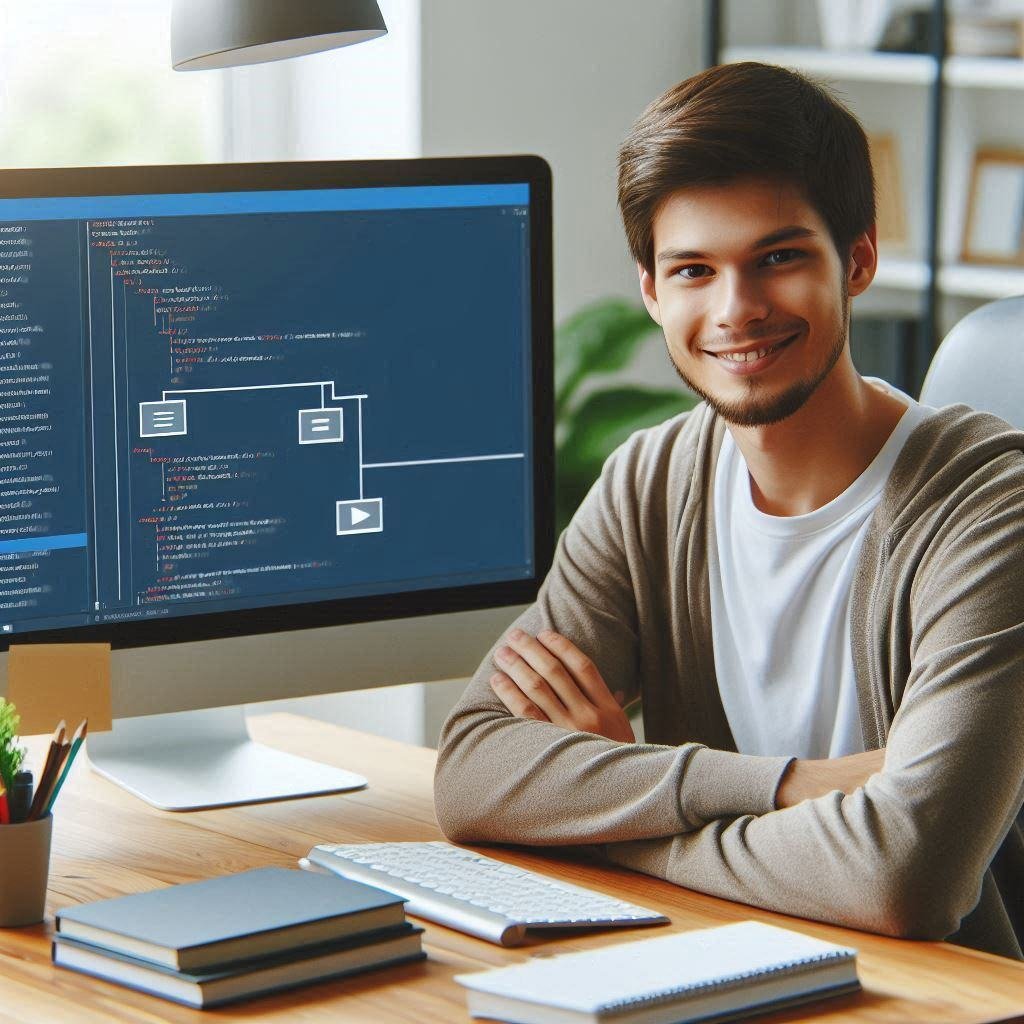Rule-Based AI: Simplify Decision-Making
While the buzz around AI often centers on complex machine learning models, rule-based AI offers a unique advantage: transparency. In a world where...
Discover what AI utility-based agents do, their decision-making processes, key components, applications, and challenges in various industries
As you explore artificial intelligence, you'll encounter various agent architectures designed to solve complex problems. Among these, utility-based agents stand out for their advanced decision-making capabilities. These AI entities evaluate potential actions based on a utility function, allowing them to make optimal choices in uncertain environments. In this article, you'll explore the fundamentals of utility-based agents, understand how they differ from simpler reactive agents, and learn why they're crucial in many AI applications. By grasping these concepts, you'll gain valuable insights into the decision-making processes that drive advanced AI systems and their potential impact on various industries.
AI utility-based agents are sophisticated artificial intelligence systems designed to make decisions based on maximizing a specific utility function. These agents go beyond simple goal-oriented behavior, incorporating a nuanced understanding of preferences and outcomes to guide their actions.
At the heart of utility-based agents is the concept of utility—a measure of desirability or satisfaction. Utility serves as a numerical representation of how valuable a particular state or outcome is. These agents evaluate different possible actions and choose the one expected to yield the highest utility.
When faced with a decision, a utility-based agent follows these steps:
This process allows the agent to handle complex, multi-faceted problems where simple yes/no decisions are insufficient.
Utility-based agents are utilized in various real-world applications:
The key advantage of utility-based agents is their flexibility and ability to handle uncertainty. By considering multiple factors and potential outcomes, they can make more nuanced decisions than simpler AI models. However, designing an appropriate utility function can be challenging, as it requires careful consideration of all relevant factors and their relative importance.
The utility function assigns a numerical value to each possible state of the environment, representing the agent's preferences. A well-designed utility function enables the agent to make decisions that align with its goals.
This component uses the utility function to evaluate different actions and select the one that maximizes expected utility, considering both immediate and long-term consequences.
A robust perception system gathers information about the environment. It processes sensory inputs into a format usable for decision-making, allowing the agent to accurately assess its surroundings.
The action set defines the range of actions available to the agent. It should be carefully designed to ensure sufficient options for achieving goals while avoiding unnecessary complexity.
Utility-based agents often include a learning mechanism to adapt to changing environments and improve performance over time. This component updates the utility function and decision-making processes based on experience and feedback.
The state representation maintains an internal model of the agent's environment, helping it understand its current situation and predict the outcomes of its actions.
Several common approaches can be used to define utility functions, shaping the agent's decision-making process and overall behavior.
In this approach, utility functions are defined based on specific goals or objectives. Higher utility values are assigned to states that align closely with these goals.
In complex environments, multiple factors need to be considered. Multi-attribute utility functions combine various attributes into a single utility measure, with weights assigned based on their relative importance.
Utility is defined based on rewards received from the environment, encouraging desired behaviors and discouraging undesired ones. This approach is common in reinforcement learning.
In uncertain environments, risk-aware utility functions incorporate probabilities and potential outcomes into the decision-making process, considering both risk and reward.
Utility functions may need to evolve over time. Adaptive utility functions allow for dynamic adjustments based on new information or changing circumstances.
To maximize expected utility, a nuanced approach that balances risk and reward while adapting to changing circumstances is required.
Expected utility represents the anticipated value of an action, considering both the probability of various outcomes and their associated utilities.
Uncertainty can be categorized into:
Adaptive learning algorithms can help mitigate these uncertainties by continuously refining the agent's understanding of the environment.
Utility-based agents are transforming decision-making processes across various domains.
In finance, utility-based agents assist with portfolio management and trading decisions. They analyze market trends, assess risk factors, and make investment choices that maximize returns while adhering to specified risk tolerance.
In healthcare, utility-based agents optimize resource allocation, patient scheduling, and treatment planning. They consider factors such as urgency, available resources, and potential outcomes to maximize overall patient care quality and operational efficiency.
In the energy sector, utility-based agents optimize power distribution and consumption. They analyze real-time data on energy demand, production capacity, and grid stability to balance efficiency, cost, and environmental impact.
Utility-based agents are transforming transportation and logistics services. In ride-sharing applications, they optimize route planning and driver allocation based on factors like distance, traffic conditions, and user preferences. In logistics, they streamline supply chain operations by making decisions on inventory management, shipment routing, and warehouse optimization.
Utility-based agents power personalized recommendation systems by analyzing user preferences, browsing history, and behavior patterns. They suggest products, content, or services that maximize user satisfaction.
Despite their potential, utility-based agents face several challenges.
As the complexity of decision-making scenarios increases, so does the processing time and resource consumption. This limitation can hinder real-time applications.
Defining accurate utility functions can be subjective and prone to biases, leading to unexpected or undesirable agent behaviors.
Scaling up utility-based agents to handle more complex tasks or environments can be challenging due to the exponential growth in possible states and actions.
Many utility-based agents struggle to adapt quickly to rapidly changing environments. Developing agents that can effectively update their utility functions and decision-making processes in real-time remains an active area of research.
Utility-based agents represent a powerful approach in artificial intelligence, allowing systems to make optimal decisions in complex, uncertain environments. By quantifying preferences and outcomes, these agents can weigh tradeoffs and select actions that maximize expected utility. While implementing utility-based AI presents challenges, the potential applications are vast—from robotics and autonomous vehicles to recommender systems and intelligent assistants. As AI continues to advance, utility-based approaches will likely play an increasingly important role. By understanding the core concepts presented here, you're well-equipped to explore this fascinating area further and consider how utility-based agents might enhance your own AI projects and applications.
What are AI utility-based agents?
AI utility-based agents are intelligent systems designed to make decisions based on a utility function. This function assigns values to different outcomes, allowing the agent to choose actions that maximize overall utility.
How do utility-based agents differ from other AI models?
Utility-based agents stand out due to their decision-making process. While rule-based systems follow predetermined instructions and goal-based agents work towards specific objectives, utility-based agents evaluate multiple factors to determine the best course of action.
What are the key components of a utility-based agent?
A utility-based agent typically consists of:
In what scenarios are utility-based agents most effective?
Utility-based agents excel in situations where multiple factors need to be balanced, there are trade-offs between different goals, the environment is uncertain or dynamic, and long-term consequences must be considered.
What are the challenges in implementing utility-based agents?
Defining an appropriate utility function can be complex, balancing short-term and long-term utility is difficult, computational requirements can be high, and ensuring ethical decision-making requires careful consideration.
By understanding these aspects and implementing the strategies outlined, you can create effective and responsible AI utility-based agents that navigate complex decision spaces and achieve desired outcomes in various domains.

While the buzz around AI often centers on complex machine learning models, rule-based AI offers a unique advantage: transparency. In a world where...

The no-code movement is reshaping the software development landscape, enabling anyone to build software applications without traditional coding...

Artificial intelligence (AI) is reshaping interactions between businesses and their customers. Two popular AI applications that often get mixed up...
Start your journey with Integrail

Try AI Studio by Integrail FREE and start building AI applications without coding.

NEW White Paper: Discover how AI Studio accelerates your workflows